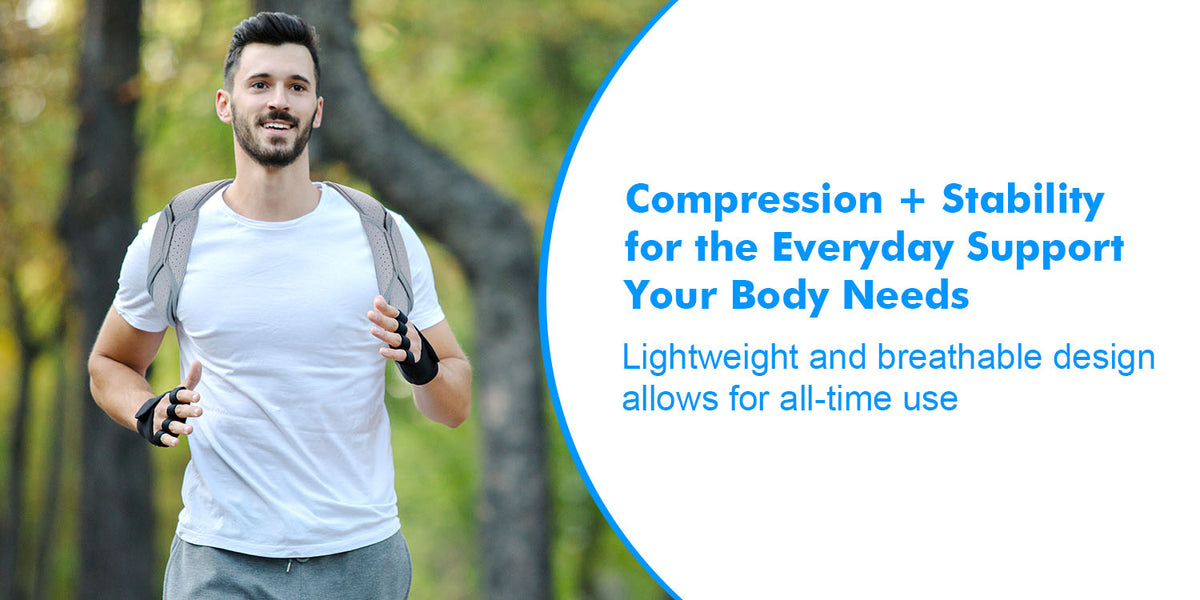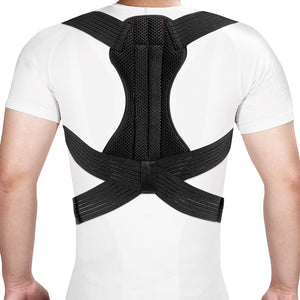Do Back Braces Work for Upper Back Pain

A upper back brace can help reduce upper back pain, especially when the pain is caused by poor posture or muscle tension. The brace is best worn 2–4 hours per day, in combination with physiotherapy and training programs, not on its own, because long-term dependence might weaken your muscles rather than strengthen them.
Supporting the Spine and Reducing Pressure
When it comes to upper back pain, a lot of the time it is due to excessive force on the muscles and joints around your spine, whether from poor posture or immobilization stresses. A back brace is typically used for alleviating upper back pain, and it can reduce stress and ease posture-related symptoms by decreasing gravitational loads on the spine.

During a clinical study, patients who wore a back brace had 45% less pain after two weeks, specifically when the upper back pain was due to sitting. This is because the Fivali brace helps maintain the natural curve of your spine, preventing you from bending forward more than what is considered healthy, and it doesn't allow you to lean back excessively, as that puts tension on the surrounding muscles.
Limiting Movement and Promoting Recovery
Back braces can prevent further damage to the affected area by limiting excessive movement, which works well in cases of upper back pain that is a consequence of overexertion, injury, or repeated motion. Back Braces limit the mobility of the spine so that the injured area has more time to rest, allowing its muscles and joints to self-repair.

In a trial among 40 participants with an acute low back injury, the use of a specific type of back brace was associated with significant restriction of movement and relief of pain during the first two weeks. Those who wore a brace after an injury said it helped with pain and made recovery faster, less painful, and reduced their reliance on medication.
Note: Back braces are designed for short-term use during healing. Therefore, back braces are usually only a part of an overall treatment plan.
Improving Posture and Preventing Future Problems
Office workers often suffer from upper back pain because of bad posture associated with sitting at a desk. A lumbar support back brace helps by providing posture correction, making the wearer maintain proper spinal alignment, preventing the rounding of the upper back that is characteristic of poor posture.
A survey among 500 office workers revealed that approximately 72% (360 people) who sit for long periods suffered from varying degrees of upper back pain. Of those who used a brace to promote back health, over 60% reported some relief from their pain, while about 45% felt that their posture had improved after four weeks of continuous wear.
Suitability for Different Conditions
Not all patients with upper back pain are best suited for a back brace. Posture support braces are best for muscular discomfort (due to muscle stiffness or mild cases of spinal sprain) and postural defects. If the pain is due to acute injury or chronic degenerative disease, a patient should base their decision about whether or not to use a brace on their individual circumstances.
Doctors will typically decide whether to recommend a back brace based on the type of pain, its cause, and the patient's personal habits. For instance, back braces are most appropriate for patients who have chronic postural upper back pain. However, for individuals with severe scoliosis or osteoporosis, braces should be used judiciously to avoid causing secondary injuries.
-
Posted in
Back pain causes, Brace, Recovery















